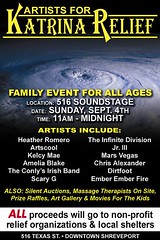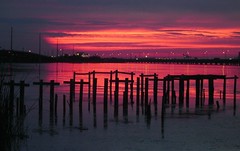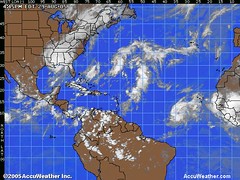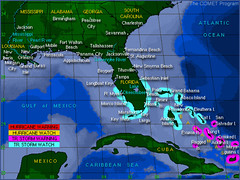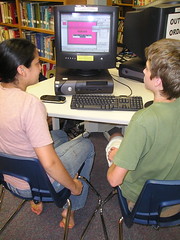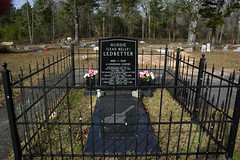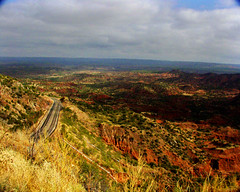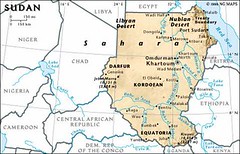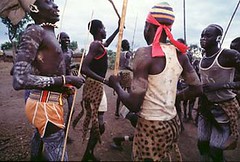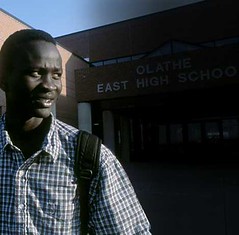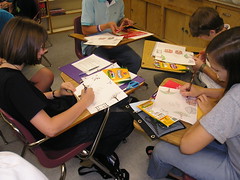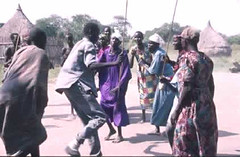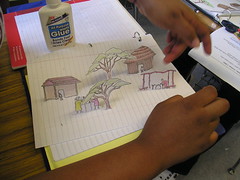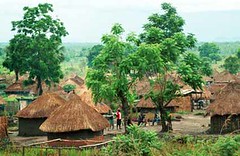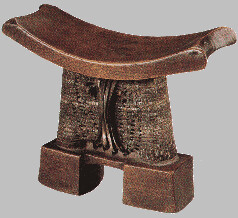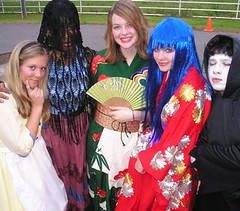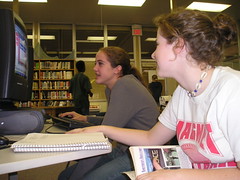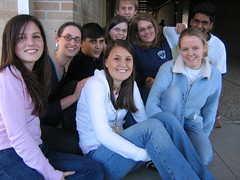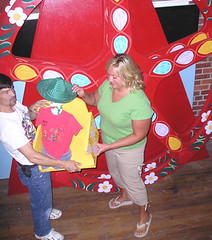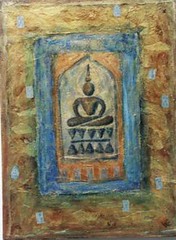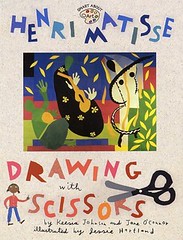Tipitna's Music Office Co-Op/Shreveport and 516 soundstage present the "Hurricane Party!"
A week full of events to benefit the hurricane victims. Each day features a separate event with proceeds and donations, etc. to assist the displaced hurricane victims.
Wednesday, August 31 9AM- Thursday, September 8 12AM (Midnight)
516 soundstage opens its doors as an air conditioned shelter for displaced musicians and their families. A secure storage facility for music equipment is provided, as well as a drop off point for canned goods, clothing, toys, and toiletries to be distributed through the Red Cross and Christian Service.
Displaced Musicians may play for tips.
OTHER EVENTS INCLUDE:
Wednesday, August 31 7PM-until: ACOUSTIC JAM
Open acoustic jam with Kurt Copeland and the Congregation. Displaced Musicians may play for tips.
Thursday, September 1 7PM-until: SONGWRITER'S NIGHT
Hosted by Heather Romero. Displaced Musicians may play for tips.
Friday and Saturday, September 2nd & 3rd: SCHEDULED SHOWS
The shows must go on. Featuring American Tragedy.
SUNDAY, September 4th, 11AM-MIDNIGHT: HURRICANE JAM!
Bring canned goods, clothing & toiletry donations, etc. as admission. Line up includes: Dirtfoot, Mars Vegas, Infinite Division, Redshift, DJ Jalapeno, Artscool, DJ Quickie Mart, Amelia Blake, Heather Romero, and many others.
Displaced Musicians may play for tips.
All times are subject to change.
For more information contact:
Dan Garner at Tipitina's Music Office Co-Op/Shreveport (318) 934-0000
or Tom E. Gun (318) 226-0901.
Wednesday, August 31, 2005
Mobile Bay, some 50 miles from the blue Gulf Stream
Open notes quiz Thursday, Sept 1.
Added to the Caribbean map:
New Orleans
Cancaun
Cozumel
Miami
Gulf Stream
today's terms -
prime meridian
equator
coral
Typical terms on the quiz:
demographics
bureaucracy
documentary
Silicon valley
mnemonic
lemur
INS (Immigration and Naturalization Service)
Swahili
290 million people
Acacia
rubric
Dinka
indigenous
4.5 million people
flash drive
Hispaniola
equinox
Added to the Caribbean map:
New Orleans
Cancaun
Cozumel
Miami
Gulf Stream
today's terms -
prime meridian
equator
coral
Typical terms on the quiz:
demographics
bureaucracy
documentary
Silicon valley
mnemonic
lemur
INS (Immigration and Naturalization Service)
Swahili
290 million people
Acacia
rubric
Dinka
indigenous
4.5 million people
flash drive
Hispaniola
equinox
Monday, August 29, 2005
Caribbean storm tracking in geo class
The week of Aug 29 - Sept 2.
Monday
* Intro Caribbean map:
Galveston to Florida Keys
Yucatan peninsula
Cuba, Jamaica,
Haiti/Dominican Republic
(Hispaniola)
Puerto Rico
Bahamas
Atlantic, Caribbean and
Gulf of Mexico
archipelago
* Library research on LBOS presentation.
Tuesday
* Submit Learning Styles Essay - typed, w parent signature. (15)
* The Gulf Stream: plotting the currents of the Gulf and Caribbean.
Wed.
Lost Boys of Sudan presentation (10); first half of alpha roll (current class seating).
Th.
Open Notes Quiz (20): multiple-choice questions on class notes and the atlas.
Ex:
1. Microsoft world headquarters is not in NYC. Bill Gates established his empire on the West coast near a) San Francisco b) Stanford Univ. c) Silicon Valley d) Seattle.
2. Cancun and Cozumel lie on the Caribbean coast of a region found in our storm tracking map. a) Key West b) Yucatan Peninsula c) Cuba d) Jamaica.
Fri.
Special presentations on the Five Themes of geography.
Monday
* Intro Caribbean map:
Galveston to Florida Keys
Yucatan peninsula
Cuba, Jamaica,
Haiti/Dominican Republic
(Hispaniola)
Puerto Rico
Bahamas
Atlantic, Caribbean and
Gulf of Mexico
archipelago
* Library research on LBOS presentation.
Tuesday
* Submit Learning Styles Essay - typed, w parent signature. (15)
* The Gulf Stream: plotting the currents of the Gulf and Caribbean.
Wed.
Lost Boys of Sudan presentation (10); first half of alpha roll (current class seating).
Th.
Open Notes Quiz (20): multiple-choice questions on class notes and the atlas.
Ex:
1. Microsoft world headquarters is not in NYC. Bill Gates established his empire on the West coast near a) San Francisco b) Stanford Univ. c) Silicon Valley d) Seattle.
2. Cancun and Cozumel lie on the Caribbean coast of a region found in our storm tracking map. a) Key West b) Yucatan Peninsula c) Cuba d) Jamaica.
Fri.
Special presentations on the Five Themes of geography.
Sunday, August 28, 2005
Watching Katrina05
"Katrina churned directly over an oceanic feature that is the nemesis of gulf state disaster planners: the "loop current," a great, deep whorl of tropics-hot seawater that pulses in between the Yucatán and Cuba each year and then stays south of Louisiana into late summer," said the New York Times. "This "is like adding high-octane fuel to the fire," a Friday night public discussion said.
Forecasters then watched in wonder as a series of conditions, many of them poorly understood, caused the storm to do what no one wanted: intensify, expand and maintain a terrifying trajectory.
The energy, the near-record low pressure in the storm's core, and its huge dimensions added up to an inevitable disaster, Mr. Read said.
"That's why they're basically forecasting Armageddon when it goes inland," he said."
See more at NYTimes.com
Forecasters then watched in wonder as a series of conditions, many of them poorly understood, caused the storm to do what no one wanted: intensify, expand and maintain a terrifying trajectory.
The energy, the near-record low pressure in the storm's core, and its huge dimensions added up to an inevitable disaster, Mr. Read said.
"That's why they're basically forecasting Armageddon when it goes inland," he said."
See more at NYTimes.com
Student tools: an info transfer tool called a flash drive
Whether called a flash drive, jump drive or USB drive, this tiny device is replacing the diskette. Why?
1) More stable.
2) Few limitations on storage space.
3) Hardy; they last year after year.
4) Economical in the long run.
5) Also may be used to store photos and mp3's.
More alternative names: pen drives, thumb drives and USB keys.
The Dane-Elec 64 mb model in the photo is avail. from Target.com at $15.
See more on the guts of a jump drive at Wikipedia.org.
The original was developed by IBM. I'm guessing that it came out of the IBM Almaden Research Center near San Jose, CA. What region? Silicon Valley, of course.
1) More stable.
2) Few limitations on storage space.
3) Hardy; they last year after year.
4) Economical in the long run.
5) Also may be used to store photos and mp3's.
More alternative names: pen drives, thumb drives and USB keys.
The Dane-Elec 64 mb model in the photo is avail. from Target.com at $15.
See more on the guts of a jump drive at Wikipedia.org.
The original was developed by IBM. I'm guessing that it came out of the IBM Almaden Research Center near San Jose, CA. What region? Silicon Valley, of course.
Saturday, August 27, 2005
CMHS Library : Creating digital presentations
A summary presentation on the documentary "Lost Boys of Sudan" was begun by my students this week. We will finish the library work Monday, Aug 29, and begin showing the Powerpoint presentations on Wednesday.
Guidelines:
1. Titling - follow essay guidelines.
2. Map - add brief facts, such as "Largest African nation."
3. Conflicts - in the lives of Peter and Santino.
4. Solutions - to the problems above.
5. Comparison - of the 2 characters, of 2 nations, 2 refugee situations; you choose.
6. Bibliography: addresses of the web sites you used for images and information.
* Keep the on-screen written material Very Brief. Use short phrases rather than complete sentences.
* Please do not use a national flag as a slide.
* Search for large images that will look effective when projected on a large-screen monitor.
* Spelling counts. Use phrases in appropriate form.
Guidelines:
1. Titling - follow essay guidelines.
2. Map - add brief facts, such as "Largest African nation."
3. Conflicts - in the lives of Peter and Santino.
4. Solutions - to the problems above.
5. Comparison - of the 2 characters, of 2 nations, 2 refugee situations; you choose.
6. Bibliography: addresses of the web sites you used for images and information.
* Keep the on-screen written material Very Brief. Use short phrases rather than complete sentences.
* Please do not use a national flag as a slide.
* Search for large images that will look effective when projected on a large-screen monitor.
* Spelling counts. Use phrases in appropriate form.
Huddie Ledbetter's Grave, Shiloh Baptist Church near Mooringsport
Huddie Ledbetter, better known as folk singer Leadbelly, is buried outside of Mooringsport at the church where he and his family worshipped, Shiloh Baptist.
While his statue on Texas St in Shreveport implies he lived there, Huddie spent more of his life in prisons, in various locations in Texas and in New York City than he did in Shreveport. But visiting Shreveport was an important part of growing up in the country, he reminds listeners in "Mister Tom Hughes' Town." Hughes was the chief of police.
Leadbelly's songbook includes "Goodnight, Irene," "Midnight Special," "Good Morning, Blues," "Alberta," "In the Pines," and "Rock Island Line." His tunes have been lauded by Kurt Cobain, Robert Plant, Eric Clapton and many more august musicians. Driving directions to his grave site - quite a pretty drive in the fall - are to be found at blues.about.com.
While his statue on Texas St in Shreveport implies he lived there, Huddie spent more of his life in prisons, in various locations in Texas and in New York City than he did in Shreveport. But visiting Shreveport was an important part of growing up in the country, he reminds listeners in "Mister Tom Hughes' Town." Hughes was the chief of police.
Leadbelly's songbook includes "Goodnight, Irene," "Midnight Special," "Good Morning, Blues," "Alberta," "In the Pines," and "Rock Island Line." His tunes have been lauded by Kurt Cobain, Robert Plant, Eric Clapton and many more august musicians. Driving directions to his grave site - quite a pretty drive in the fall - are to be found at blues.about.com.
Palo Duro Canyon, near Amarillo, TX / photo Mike Rosebery
A visit to Palo Duro Canyon State Park is a treat. The gigantic walls of the ancient site are awe-inspiring. The small river in the bottom of the canyon is the Prairie Dog Red. It is the mother stream that becomes the Red River. Here's a profile:
Red River (USA)
Western tributary of the Mississippi River, USA, 1,638 km/1,018 mi long; so called because of the reddish soil sediment it carries. Formed in Oklahoma by the confluence of the North Fork and the Prairie Dog Town Fork, it flows through Texas, Arkansas, and Louisiana, before entering the Mississippi near Baton Rouge, about 500 km/310 mi above the Gulf of Mexico. The stretch that forms the Texas–Oklahoma border is called Tornado Alley because of the storms caused by the collision in spring of warm air from the Gulf of Mexico with cold fronts from the north. The largest city on its course is Shreveport, Louisiana.
The Prairie Dog Town Fork rises in Staked Plains, Texas, and passes through Palo Duro canyon, 160 km/100 mi long and 300 m/984 ft deep.
© Research Machines plc 2005.
The evocative photo is by rambling Shreveporter Mike Rosebery.
Red River (USA)
Western tributary of the Mississippi River, USA, 1,638 km/1,018 mi long; so called because of the reddish soil sediment it carries. Formed in Oklahoma by the confluence of the North Fork and the Prairie Dog Town Fork, it flows through Texas, Arkansas, and Louisiana, before entering the Mississippi near Baton Rouge, about 500 km/310 mi above the Gulf of Mexico. The stretch that forms the Texas–Oklahoma border is called Tornado Alley because of the storms caused by the collision in spring of warm air from the Gulf of Mexico with cold fronts from the north. The largest city on its course is Shreveport, Louisiana.
The Prairie Dog Town Fork rises in Staked Plains, Texas, and passes through Palo Duro canyon, 160 km/100 mi long and 300 m/984 ft deep.
© Research Machines plc 2005.
The evocative photo is by rambling Shreveporter Mike Rosebery.
Thursday, August 25, 2005
Sudan / National Geographic
In making visual presentations we will use these guidelines.
The current project is to summarize the story of the Lost Boys of Sudan. Their village of Yirol is near Bor, along the Mountain Nile, in the extreme south.
1. Number of slides.
2. Appropriate images for each slide.
3. Quality of images.
4. Relevance of info on each frame.
5. Brevity of printed info.
6. Sources documented at the bottom of each image.
7. Spelling.
8. Construction of phrases / standard English.
9. Logical order.
10. Inclusion of a brief Comparison slide.
11. Inclusion of an explanatory map slide.
12. Presentation includes explanation of brief items on screen.
13. Please avoid using the nation’s flag as a slide image.
The current project is to summarize the story of the Lost Boys of Sudan. Their village of Yirol is near Bor, along the Mountain Nile, in the extreme south.
1. Number of slides.
2. Appropriate images for each slide.
3. Quality of images.
4. Relevance of info on each frame.
5. Brevity of printed info.
6. Sources documented at the bottom of each image.
7. Spelling.
8. Construction of phrases / standard English.
9. Logical order.
10. Inclusion of a brief Comparison slide.
11. Inclusion of an explanatory map slide.
12. Presentation includes explanation of brief items on screen.
13. Please avoid using the nation’s flag as a slide image.
Wednesday, August 24, 2005
Summary powerpoint presentation on LBOS to be created Fri and Mon
Lost Boys of Sudan (LBOS) is a documentary that provokes several culminating activities. One takes place Thursday; it is the comparison essay on Peter and Santino. Another one is to make a summary powerpoint presentation on the immigrants' story. Wednesday we began planning the summary by writing notes for a storyboard.
Friday and Monday we will work on computers in the library in making the digital slide show.
The top producers in each class will be allowed to show their presentations to students in other teachers' geography classes.
Friday and Monday we will work on computers in the library in making the digital slide show.
The top producers in each class will be allowed to show their presentations to students in other teachers' geography classes.
lostBoys-Peter_Dut_copy
What has happened to Peter and Santino subsequent to the film?
There is much to learn and enjoy at the web site of the documentary Lost Boys of Sudan. The site is LostBoysFilm.com.
There is much to learn and enjoy at the web site of the documentary Lost Boys of Sudan. The site is LostBoysFilm.com.
Understanding Sudan- add demograhics to village images
Terminology for the essay to be written in class Thursday:
demograhic info
bureaucracy
evaluate
Dinka
Nilotic
United Nations
refugee / asylum
Peter Dut
Santino Chuor
South Sudan
INS: Immigration and Naturalization Service
ululation
fu fu
Eastern Africa
Swahili
Acacia tree
English / British colony
Arabic / Muslims
mnemonic
Nairobi, Kenya
documentation
indigenous
Houston: 4.5 M
Kansas City: 2 M
demograhic info
bureaucracy
evaluate
Dinka
Nilotic
United Nations
refugee / asylum
Peter Dut
Santino Chuor
South Sudan
INS: Immigration and Naturalization Service
ululation
fu fu
Eastern Africa
Swahili
Acacia tree
English / British colony
Arabic / Muslims
mnemonic
Nairobi, Kenya
documentation
indigenous
Houston: 4.5 M
Kansas City: 2 M
Sunday, August 21, 2005
From East Africa to Houston and Kansas City
Dinka tribesmen Peter Nyarol and Santino Chuor are the subjects of Lost Boys of Sudan. Thursday in geo class students will compose a comparison essay on either a) Peter and Santino and how they reacted to their immigrant challenges, or b) Houston and Kansas City from the point of view of an African immigrant.
The rubric (required elements) that will guide essay writing in geo class includes:
1. Colorful opening. There are 3 recommended ways to create an interest-getting opening: a) use a quote b) ask a question c) write with vivid description.
2. Blend the topics continually in the paper. Do not write a block of material about one topic and then write a separate block about the other topic. Integrate the topics as you offer insight and evidence.
3) Use comparison terms:
* different from,
* the same,
* Both,
* similar to,
* Neither, ... nor,
* like X is (adjective),
* ... than X is (adverb) than.
* both, ...
* either...or
* likewise
* similarly
* although,
* but neither...
* nor
* however
* on the other hand
4. Specific examples must be used to support generalities. An example: generality - The Incredibles was an awesome movie. specific - The Incredibles appealed to me because the characters (especially the mom and the teen sister) were believeable. They sounded like people I know.
5. Grammar counts.
6. Spelling, too. When in doubt, see a dictionary or ask me.
7. Punctuation is paramount. Again, ask me or your Grammar Check software.
8. Include documentation via "according to ...". This means include your source - from World Book to your little brother - in the body of your writing. Usually you place it at the end of the first or second sentence, says Grammar For Today.
9. Write a snappy title. Ways to make a title fun are to tweak a song or movie title or use alliteration. Also, write an explanatory subtitle. Example: "Dinkas are Incredibles;" "Many refugees from the Sudanese Dinka tribe have moved from poverty in east Africa to comfort in the US."
Finally, please don't put quotation marks around your title - unless you are quoting someone.
The rubric (required elements) that will guide essay writing in geo class includes:
1. Colorful opening. There are 3 recommended ways to create an interest-getting opening: a) use a quote b) ask a question c) write with vivid description.
2. Blend the topics continually in the paper. Do not write a block of material about one topic and then write a separate block about the other topic. Integrate the topics as you offer insight and evidence.
3) Use comparison terms:
* different from,
* the same,
* Both,
* similar to,
* Neither, ... nor,
* like X is (adjective),
* ... than X is (adverb) than.
* both, ...
* either...or
* likewise
* similarly
* although,
* but neither...
* nor
* however
* on the other hand
4. Specific examples must be used to support generalities. An example: generality - The Incredibles was an awesome movie. specific - The Incredibles appealed to me because the characters (especially the mom and the teen sister) were believeable. They sounded like people I know.
5. Grammar counts.
6. Spelling, too. When in doubt, see a dictionary or ask me.
7. Punctuation is paramount. Again, ask me or your Grammar Check software.
8. Include documentation via "according to ...". This means include your source - from World Book to your little brother - in the body of your writing. Usually you place it at the end of the first or second sentence, says Grammar For Today.
9. Write a snappy title. Ways to make a title fun are to tweak a song or movie title or use alliteration. Also, write an explanatory subtitle. Example: "Dinkas are Incredibles;" "Many refugees from the Sudanese Dinka tribe have moved from poverty in east Africa to comfort in the US."
Finally, please don't put quotation marks around your title - unless you are quoting someone.
Sudanese Village: just add demographics
Students in geo class will add demographic graphs to their artful representations of a Sudanese village. The model was created to reinforce the perspective gained from watching the PBS documentary Lost Boys of Sudan.
Reading about the Mystery Man of Stonehenge in the August Smithsonian Magazine, I was reminded that most people at one time lived in circular huts. The story about the archer's deluxe burial some 4,300 years ago said the fellow "would have likely encountered a rural setting of round timber houses with conical thatched roofs."
Reading about the Mystery Man of Stonehenge in the August Smithsonian Magazine, I was reminded that most people at one time lived in circular huts. The story about the archer's deluxe burial some 4,300 years ago said the fellow "would have likely encountered a rural setting of round timber houses with conical thatched roofs."
Wednesday, August 17, 2005
Dinka huts near the White Nile, southern Sudan
Another story of the Dinka survivors - the Lost Boys of Sudan - is in the Burlington, VT, newspaper. Abraham lived a life similar to that of Peter and Santini of the documentary.
Refugee child Zubeida, Sudan
Refugees are common in this part of the world. There is also considerable slavery in Sudan. Sudanese children can be bought for $30, according to cnn.com.
Civil war and drought are certainly part of the environment in which this dreadful life unfolds.
Civil war and drought are certainly part of the environment in which this dreadful life unfolds.
Sudanese head rest
Preparing for the movie Lost Boys of Sudan, the class has examined the map of the continent of Africa with a focus on East Africa.
Regions of the African continent:
* Mediterranean/Arabic Africa (Morocco to Egypt along the Mediterranean)
* East Africa (Egypt to South Africa along the Indian Ocean)
* Sub-Saharan Africa (below the Sahara)
* West Africa (from Morocco to South Africa on the Atlantic coast)
Larger regions:
* Europe
* SW Asia / the Middle East
* Africa (both a continent and a region)
The course of the Nile:
* the Blue Nile rises in Ethiopia.
* the White Nile or Mountain Nile rises in Uganda - its source is Lake Victoria.
* The confluence of the 2 branches is at Khartoum, Sudan.
Terms:
A river's upper part is near its source. A river's lower section is near its mouth.
Examples:
* the Mississippi - Minnesota to Louisiana.
* the Red River - Texas panhandle to Louisiana; near Alexandria it flows into the Miss.
* The Nile - Ethiopia and Uganda to Egypt. It flows north, which is unusual.
Regions of the African continent:
* Mediterranean/Arabic Africa (Morocco to Egypt along the Mediterranean)
* East Africa (Egypt to South Africa along the Indian Ocean)
* Sub-Saharan Africa (below the Sahara)
* West Africa (from Morocco to South Africa on the Atlantic coast)
Larger regions:
* Europe
* SW Asia / the Middle East
* Africa (both a continent and a region)
The course of the Nile:
* the Blue Nile rises in Ethiopia.
* the White Nile or Mountain Nile rises in Uganda - its source is Lake Victoria.
* The confluence of the 2 branches is at Khartoum, Sudan.
Terms:
A river's upper part is near its source. A river's lower section is near its mouth.
Examples:
* the Mississippi - Minnesota to Louisiana.
* the Red River - Texas panhandle to Louisiana; near Alexandria it flows into the Miss.
* The Nile - Ethiopia and Uganda to Egypt. It flows north, which is unusual.
Tuesday, August 16, 2005
Classroom philosophy and practice at CMHS
Classroom guidelines ~
$ When the bell rings I expect you to immediately and quietly open your notebook (without my reminder!) and attack the material which you'll find on the board. Frequently CMHS bells do not ring. You'll be expected to go to your tasks at the appropriate time regardless of the bell. Get your money's worth from Magnet!
$ Water and water bottles are good. If you have a carbonated beverage, lunch or snack and you absolutely Must partake, please do so discreetly. Keep it in your book bag; nip quietly and unobtrusively. If you must chew gum, please do so inconspicuously. Before addressing the class always expel gum ("Expeliarmus!"), please.
$ Bring all necessary materials to class Each day:
* Rand McNally Quick Reference World Atlas (RMQRWA)
* notebook
* handouts
* pens
* colors
* scissors.
$ Following directions efficiently is one of your biggest challenges. You must take responsibility for knowing the guidelines.
$ Warmth! Generosity! Hugs!
Our golden words are "please," "thank you," "pardon me," and "Is it possible that ...?" .
$ Dress smartly. I believe that you can help yourself get more out of class if you don a sort of student/business attire. This is, after all, your job for the next four years. High school is a job and it pays off with scholarships and competence in college.
$ Compliment your fellow students (and teachers) every day.
Expectations and Evaluations: how to ace geography class
Classroom expectations include
1) begin work immediately at the sound of the bell - without waiting for me to say anything. There will be work on the board designed to enagage you and set the tone.
2) questions and remarks are encouraged; simply remember to raise your hand before responding.
3) please type all home work; neatness counts.
Grading is based upon~
a) Comparison essays. First, don't ignore the guidelines. Next, turn the writing in on time. Late penalty: 33% of the possible points. Plus, I must issue a note to be signed by your parents.
b) Projects. See above, please.
c) Teacher-made and student-made multiple-choice tests that are based on class notes and the website material.
d) Map quizzes. All items must be spelled correctly. Misspellings lose a half point. Those with congenitally weak spelling skills will enjoy our in-class mnemonic building.
e) Build your point total by taking on independent assignments. The best way to earn these bonus points is by writing comparison essays. See the web site each week for topics. You may also serve appropriate ethnic dishes - accompanied by an essay - for points. Please see me.
f) Given item 'e' there's no reason you shouldn't find an amenable pathway to an A average. Wouldn't you agree?
1) begin work immediately at the sound of the bell - without waiting for me to say anything. There will be work on the board designed to enagage you and set the tone.
2) questions and remarks are encouraged; simply remember to raise your hand before responding.
3) please type all home work; neatness counts.
Grading is based upon~
a) Comparison essays. First, don't ignore the guidelines. Next, turn the writing in on time. Late penalty: 33% of the possible points. Plus, I must issue a note to be signed by your parents.
b) Projects. See above, please.
c) Teacher-made and student-made multiple-choice tests that are based on class notes and the website material.
d) Map quizzes. All items must be spelled correctly. Misspellings lose a half point. Those with congenitally weak spelling skills will enjoy our in-class mnemonic building.
e) Build your point total by taking on independent assignments. The best way to earn these bonus points is by writing comparison essays. See the web site each week for topics. You may also serve appropriate ethnic dishes - accompanied by an essay - for points. Please see me.
f) Given item 'e' there's no reason you shouldn't find an amenable pathway to an A average. Wouldn't you agree?
Scholars: literature class 04-05, CMHS / Braunig
You go to a great school not so much for knowledge as for arts and habits;
for the habit of attention, for the art of expression,
for the art of entering quickly into another person's thoughts,
for the art of indicating assent or dissent in graduated terms,
for the habit of regarding minute points of accuracy,
for the art of working out what is possible in a given time,
for taste, discrimination,
for mental courage and mental soberness.
And above all you go to a great school for self-knowledge.
- William Johnson Cory (English poet and classicist, 1823-92)
for the habit of attention, for the art of expression,
for the art of entering quickly into another person's thoughts,
for the art of indicating assent or dissent in graduated terms,
for the habit of regarding minute points of accuracy,
for the art of working out what is possible in a given time,
for taste, discrimination,
for mental courage and mental soberness.
And above all you go to a great school for self-knowledge.
- William Johnson Cory (English poet and classicist, 1823-92)
Sudan / East Africa: civil war and genocide
Our map and cultural study begins with a view of the horrendous civil war in Sudan via the documentary Lost Boys of Sudan. See more at Lostboysfilm.com.
Service hours: Painting and assembling items for SRAC's Dia de los Muertos
Student volunteers can get service hours for helping Shreveport Regional Arts Council prepare for its Dia de Los Muertos exhibit. The show opens at Artspace on Sept. 8.
Ms. Alicia Smith (in photo with SRAC manager Duane Rousseau) is coordinating workers. Please call her at 572-9269 or 227-9605.
Ms. Alicia Smith (in photo with SRAC manager Duane Rousseau) is coordinating workers. Please call her at 572-9269 or 227-9605.
Monday, August 08, 2005
Learning styles: what's your favorite way to be successful at school?
Learning Styles Enquiry / Trudeau / CMHS
Which learning styles styles seem best in describing you?
1) Write a description of a class or project in which you were successful. Be specific; in other words, use examples or visual scenes.
2) Afterwards, write about the connection between your self-description and the learning styles below. Several may apply. Include a connection to the visual/kinesthetic/auditory styles, too.
3) Use your best grammar and spelling. Also, neatness counts.
4) Write a polished copy ay home. Have a parent sign it, please!
Style One: learns by doing, doesn’t necessarily like deep thinking, is spontaneous; often creative; does not like sitting still looking at books; prefers games, competitions, short presentations.
Style Two: likes clear, structured, well organized tasks; wants everything done in order; wants “just the facts not opinions, thank you.” Enjoys textbooks and works well with traditionally styled curriculum; has to work at being creative, but it is not necessarily a chore; not naturally spontaneous, and tends to be cautious.
Style Three: is a problem-solver, self-motivated, analyzes things, often prefers logical subjects like math and science; works well independently; enjoys long-term projects. Seems to work well with organized lectures as part of their curriculum.
Style Four: is very social, maybe even a “social butterfly” type thriving on personal interaction with many different people. Interested in people, ideas and principles of a subject, not necessarily the events themselves. Has to work at organization. They are often vulnerable to conflict and criticism. “Why” is a very important question to them.
Visual -- receives information best through visual stimulation (i.e., pictures, diagrams, reading)
Kinesthetic -- receives information best through touch and hands-on activities (i.e., craft projects, cuisenaire rods, science labs)
Auditory -- receives information best via “sound bytes” (i.e., lectures, songs, books on tape)
Buddha / Lisa Lippuner, Nongkhai, Thailand
Boys want to be Buddhas. They want to be independent and stoic. They want to imagine that they always make effective decisions and do terrific work - on their own.
Some boys can operate independently to a great extent. But most young males need more attention and cooperation and help from adults than they would ever admit.
My recommendation after years of observation is that boys and their parents ought to agree that Cooperation between Parent and Student is Essential. Especially when you are entering a demanding academic institution and making the transition from middle school to high school.
My thoughts are spurred by USA Today's recommendation of a book by Michael Gurian called The Minds of Boys: Saving our Sons from falling Behind in School and Life. I'm going to look for it at the library.
USA Today's summary of Gurian's thoughts: "Boys learn differently from girls and are not as well suited to sit still in a place like school."
Gurian recommends:
a) "Create a parent-led team...Boys learn better through projects and tasks with a mentor, whether it's a relative, a family friend or a coach."
b) "Do homework together. Sit at the kitchen table every night to go through his homework." USA Today says "Your son might complain at first, but Gurian says most boys crave the one-on-one time and attention.
c) "watch what he eats...The ability to focus is directly linked to nutrition."
As a veteran teacher I highly concur with these recommendations. Each year I watch as parents and students try to avoid and then have to face academic difficulties. Many of those problems can be minimized if Gurian's guidelines are integrated into your lives from the beginning of the semester.
More advice? Call me at 861-6809 or email me at trudeau@earthlink.net. I am here to help.
Some boys can operate independently to a great extent. But most young males need more attention and cooperation and help from adults than they would ever admit.
My recommendation after years of observation is that boys and their parents ought to agree that Cooperation between Parent and Student is Essential. Especially when you are entering a demanding academic institution and making the transition from middle school to high school.
My thoughts are spurred by USA Today's recommendation of a book by Michael Gurian called The Minds of Boys: Saving our Sons from falling Behind in School and Life. I'm going to look for it at the library.
USA Today's summary of Gurian's thoughts: "Boys learn differently from girls and are not as well suited to sit still in a place like school."
Gurian recommends:
a) "Create a parent-led team...Boys learn better through projects and tasks with a mentor, whether it's a relative, a family friend or a coach."
b) "Do homework together. Sit at the kitchen table every night to go through his homework." USA Today says "Your son might complain at first, but Gurian says most boys crave the one-on-one time and attention.
c) "watch what he eats...The ability to focus is directly linked to nutrition."
As a veteran teacher I highly concur with these recommendations. Each year I watch as parents and students try to avoid and then have to face academic difficulties. Many of those problems can be minimized if Gurian's guidelines are integrated into your lives from the beginning of the semester.
More advice? Call me at 861-6809 or email me at trudeau@earthlink.net. I am here to help.
Wednesday, August 03, 2005
Scissors, colors, notebook and fee for geo class
What to get for geography class under Robert Trudeau at Caddo Magnet High:
1. portable scissors
2. colors of any sort: pastel markers, crayons, watercolor, map pencils, all are good.
As you can see, we will create colorful, artful constructions as part of the learning process.
The class fee defrays expenses in materials, in copy-making, and field trips; it is $5. Please make checks payable to Caddo Magnet High School.
Notebooks? Yes, they are very important in the skill of processing and organizing info, which is a key to success in modern life.
Notebooks must
1. have perforated pages so your submissions are neat, and
2. have pockets for saving handouts. Otherwise, I leave the choice to you.
Merci!
Also, please see my post on the RMQRWA!
1. portable scissors
2. colors of any sort: pastel markers, crayons, watercolor, map pencils, all are good.
As you can see, we will create colorful, artful constructions as part of the learning process.
The class fee defrays expenses in materials, in copy-making, and field trips; it is $5. Please make checks payable to Caddo Magnet High School.
Notebooks? Yes, they are very important in the skill of processing and organizing info, which is a key to success in modern life.
Notebooks must
1. have perforated pages so your submissions are neat, and
2. have pockets for saving handouts. Otherwise, I leave the choice to you.
Merci!
Also, please see my post on the RMQRWA!
Subscribe to:
Comments (Atom)
